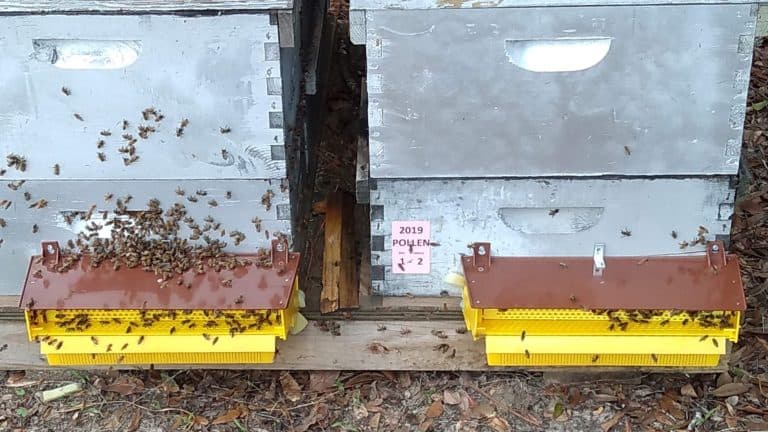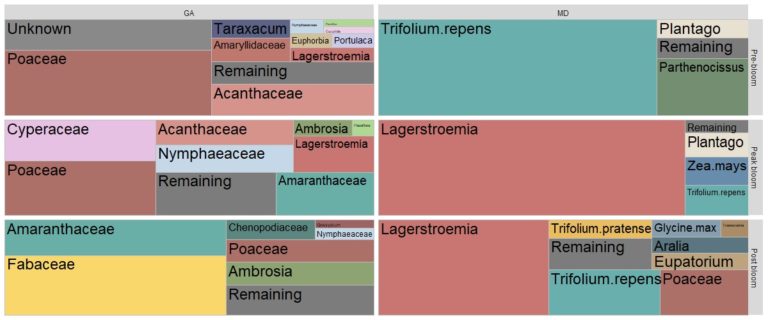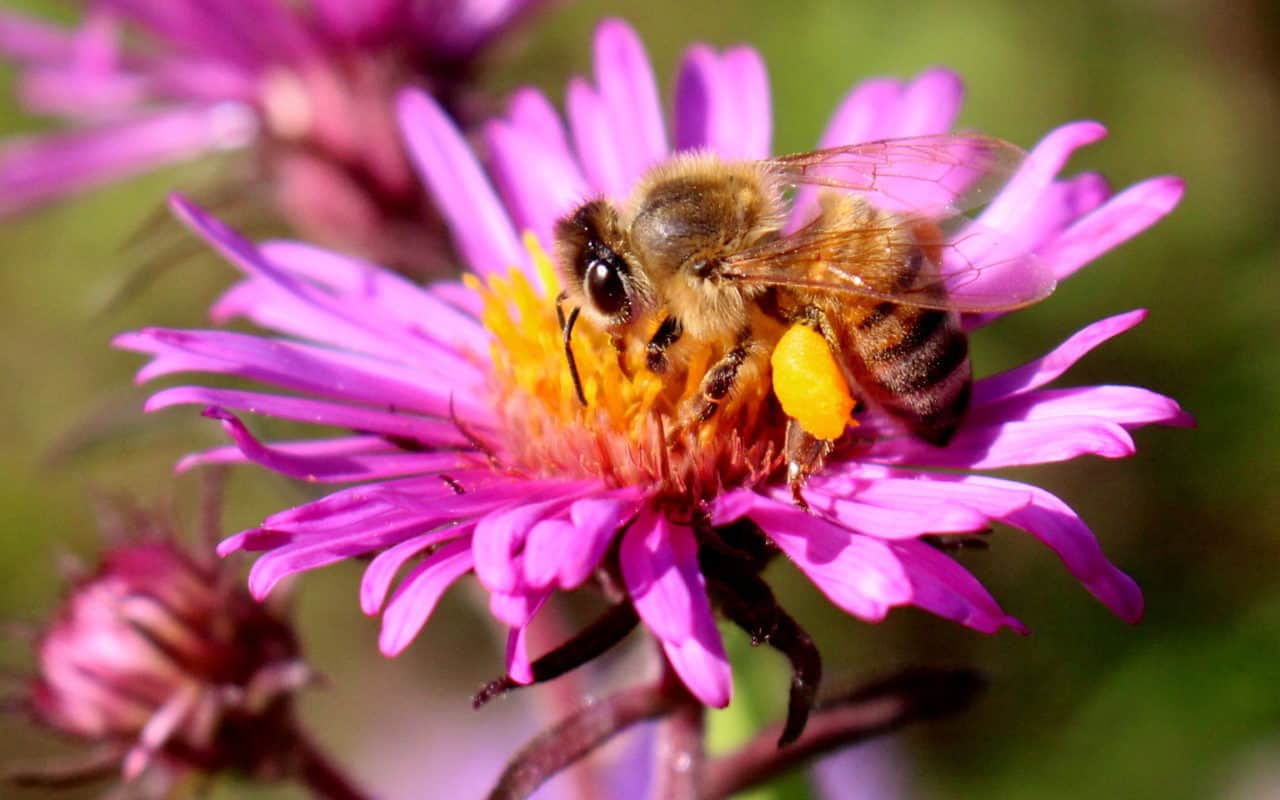The Bee Informed Partnership is fortunate to be active in both the bee science and beekeeping world, which leads to a lot of opportunities for collaboration and applied research. One of the recent ways in which this collaboration has come to fruition is an exploratory study looking at the potential to use trapped pollen from honey bee colonies as a means to: 1) look at the presence of heavy metals in the environment, 2) assess the degree to which the available pollen was able to meet colony nutritional needs, and 3) use laboratory techniques to assess pollen richness and diversity throughout the bloom period. This project was supported by funding from The James M. Cox Foundation.
The fieldwork for the study was carried out in agricultural settings in Maryland and Georgia, adjacent to soybean and cotton fields respectively. Neither soybean nor cotton provide substantial amounts of pollen to honey bee colonies but they are common crops in their region and the interest was in evaluating pollen from the landscape, not just the agricultural crop. Within each state, three apiary locations were used with samples collected from each apiary at pre-bloom, mid-bloom, and post-bloom stages for each crop during the summer of 2019. Samples were collected by trapping pollen in the apiary over a 24 hour period from multiple colonies in each apiary to obtain a sample of pollen representing the surrounding landscape.

Photo: Dan Wyns
The front-mounting style pollen trap in this study is affixed to the hive in front of the entrance at the bottom of the hive. Once installed, the returning foragers must pass through a screen to reenter the hive. The holes in the screen are large enough to just permit bee entry without injury, but in passing through the screen the pollen pellet stored on the corbicula is stripped off and falls through another piece of mesh screen into a basket for collection. Once collected, the pollen samples were immediately frozen in order to prevent degradation and shipped to the BeeOdiversity lab for analysis.
The first avenue of analysis was to explore the heavy metal contamination of the pollen. The intent of this analysis was to gain a better understanding of the amount of heavy metals entering a hive as they may have impacts on bee or human health (via consumption of hive products). The development of the analysis may also provide insight into the possibility of using trapped pollen as a medium to determine environmental contamination. Seven metals were tested for: arsenic, cadmium, chromium, copper, lead, mercury, and zinc.

Photo: Dan Wyns
Since there are no heavy metal residue standards for the United States honey and hive products, and the analysis was done in a European lab, the EU Maximum Residue Levels (MRLs) were used as a point of comparison. The levels of arsenic in the samples from Georgia were higher than expected background levels during all 3 sampling periods. Chromium levels in Georgia were also elevated, most notably in the first sampling prior to bloom. While some of the elements appeared at higher than anticipated levels, none of the samples showed levels exceeding the MRLs for any of the heavy metals tested.
The next aspect of analysis was to determine whether the foraged pollen provided adequate nutrition for the colonies in each location during the different collection periods. The crude protein content of pollen varies widely by floral source, and our analysis indicated most samples contained inadequate protein to support optimal brood rearing. In addition to looking at crude protein, the levels of ten essential amino acids were quantified and found to be lacking in nearly all samples.
These findings are supportive of beekeeper observations that brood rearing often slows while colonies are in cotton fields. While these findings are limited in scope, they do provide an example of how a tool like pollen analysis could help substantiate beekeeper observations and may support decision-making about when and where to provide supplemental feed to remedy deficiencies in the landscape.

The final aspect of collected pollen that was evaluated in this study was the richness and diversity of the floral sources. Varieties of pollen were identified the family level, and further refined to genus and species when possible. One interesting aspect of the pollen source determination found that pollen from both target crops (soy and cotton) were very rare or absent in all samples, confirming early research and beekeeper observations that foragers do not readily collect pollen from these plants. Overall, throughout the study there was a greater variety of pollen sources in GA (44) compared to MD (27) and the number of pollens present at each sampling period remained more consistent in GA compared to MD.
While this project was small in scope, we hope to use the findings to support further investigation of the potential to use pollen analysis as both an environmental indicator and tool to support beekeeper decision-making. For a more in depth report on this project and other BIP research efforts, check out the Bee Informed Partnership Research Page.
